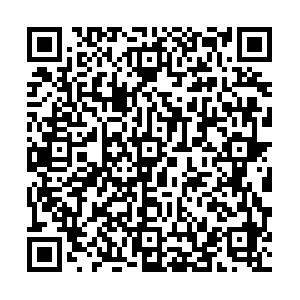Effect of Mechanical Vibration Assisted Expectoration in Neonatal Infectious Pneumonia
-
摘要:
目的 探索应用电动牙刷的机械振动作用来协助新生儿进行排痰的效果。 方法 选取120例昆明市儿童医院新生儿科接受治疗的感染性肺炎的新生儿开展研究,随机数字表法分为对照组和实验组各60例,对照组按常规方法进行电动吸痰护理,实验组使用电动牙刷进行机械振动后再进行电动吸痰,比较2组症状消失时间、住院时间、治疗前后的血气分析指标变化、肺脏超声变化情况。 结果 应用电动牙刷机械振动辅助排痰组患儿在症状消失时间和住院时间均低于对照组(P < 0.05),治疗后,研究组血气分析结果PaO2高于对照组,PaCO2低于对照组(P < 0.05);治疗前后动态观察2组患儿肺部超声图像变化,可见B线逐渐减少,胸膜线和A线的恢复,实变范围缩小等征象的时间明显小于对照组。 结论 对于新生儿感染性肺炎进行吸痰前先施以机械振动,可以使痰液排出更充分,从而提升治疗的效果,且操作简单,值得在临床上推广使用。 Abstract:Objective To explore the effect of mechanical vibration of electric toothbrush on neonatal sputum excretion. Methods 120 children with neonatal infectious pneumonia were randomly divided into control group and experimental group. The control group received electric sputum suction nursing according to the conventional method, and the experimental group received electric sputum suction after mechanical vibration with electric toothbrush. The disappearance time of symptoms, the hospital stay and the changes of blood gas analysis indexes and lung ultrasound before and after treatment were compared between the two groups. Results The symptom disappearance time and hospitalization time of children in the electric toothbrush mechanical vibration assisted expectoration group were shorter than those in the control group (P < 0.05). After treatment, the results of blood gas analysis index PaO2 in the experimental group were higher than those in the control group, and PaCO2 was lower than those in the control group (P < 0.05). Dynamic observation of the changes of pulmonary ultrasound images of children in the two groups before and after treatment showed that the time of signs such as the gradual reduction of B line, the recovery of pleural line and a line, and the reduction of consolidation range in the experimental group were significantly less than those in the control group. Conclusion Mechanical vibration before sputum suction for neonatal infectious pneumonia can make sputum discharge more fully, so as to improve the treatment effect, and the operation is simple and is worthy of clinical application. -
Key words:
- Mechanical vibration /
- Electric sputum suction /
- Newborn /
- Infectious pneumonia /
- Nursing intervention
-
表 1 2组一般资料的比较结果[
$ \bar x \pm s $ /n(%)]Table 1. Comparison of general information between two groups [
$ \bar x \pm s $ /n(%)]组别 n 日龄(d) 母乳喂养 分娩方式 入院体重(g) 阴道分娩 剖宫产 实验组 60 20.05 ± 2.23 43(72) 46(76.7) 14(23.3) 30456.86 ± 852.15 对照组 60 21.03 ± 1.59 45(75) 44(73.4) 16(26.6) 3014.89 ± 913.20 t/χ2 2.259 4.053 3.181 0.538 P 0.056 0.072 0.076 0.582 表 2 组治疗指标比较(
$ \bar x \pm s $ )Table 2. Comparison of treatment indexes between the two groups (
$ \bar x \pm s $ )组别 n 痰液消失(d) 咳嗽消失(d) 住院天数(d) 实验组 60 4.45 ± 1.54 5.20 ± 2.13 6.43 ± 1.87 对照组 60 6.43 ± 1.26 8.15 ± 2.26 9.10 ± 2.65 t 7.346 4.863 3.969 P < 0.001* < 0.001* < 0.001* *P < 0.05。 表 3 2组治疗前后动脉血气分析指标情况比较 (
$ \bar x \pm s $ )Table 3. Comparison of arterial blood gas analysis indexes between the two groups before and after treatment (
$ \bar x \pm s $ )
组别PaO2(mmHg) PaCO2(mmHg) 护理前 护理后 护理前 护理后 对照组 60.25 ± 9.09 72.24 ± 14.56 45.53 ± 11.03 38.27 ± 8.52 实验组 60.46 ± 8.35 80.84 ± 13.24 46.02 ± 10.35 35.51 ± 6.82 t 0.892 6.843 0.026 3.283 P 0.487 0.001* 0.681 0.013* *P < 0.05。 -
[1] 丁瑛雪,崔红. 新生儿重症感染性肺炎的病因与抗感染治疗[J]. 中国小儿急救医学,2017,24(5):340-345. doi: 10.3760/cma.j.issn.1673-4912.2017.05.005 [2] 王艳,丁传刚. 新生儿感染性肺炎的诊治进展[J]. 医学综述,2010,16(22):3460-3462. doi: 10.3969/j.issn.1006-2084.2010.22.035 [3] 钱甜,曹云,王传清,等. 新生儿社区和医院感染性肺炎的病原学特点和细菌药敏分析[J]. 临床儿科杂志,2009,27(3):230-235. doi: 10.3969/j.issn.1000-3606.2009.03.008 [4] 张永青. 新生儿肺炎临床观察和护理[J]. 健康必读:下半月,2011(6):171-173. [5] 罗晓琴,段功香,王芳,等. 面罩叩背排痰预防低出生体重儿呼吸机相关性肺炎的效果观察[J]. 全科护理,2019(31):3922-3925. doi: 10.12104/j.issn.1674-4748.2019.31.021 [6] 范娟,王建辉. 震动排痰仪在新生儿重症肺炎中的应用效果[J]. 护理实践与研究,2012,9(10):24-25. [7] 李智军. 机械振动排痰对呼吸衰竭患儿排痰效果及临床症状的影响[J]. 实用临床医药杂志,2015,19(6):104-107. doi: 10.7619/jcmp.201506033 [8] 尹丽娟,宝凌云,李玲,等. 新生儿呼吸道合胞病毒肺炎护理干预及医院感染控制效果[J]. 昆明医科大学学报,2020,41(6):178-180. doi: 10.3969/j.issn.1003-4706.2020.06.035 [9] 邵肖梅, 叶鸿瑁, 丘小汕. 实用新生儿学[M]. 北京: 人民卫生出版社, 2018: 401-408. [10] 刘凯凤,张镇,张郑平,等. 重症肺炎患者早期行机械通气的列线图预测模型构建及验证[J]. 天津医药,2021,49(3):320-324. [11] 卜琰娜. 新生儿感染性肺炎病原菌特点及炎症与免疫指标检测分析[J]. 延安大学学报(医学科学版),2021,19(1):65-68. [12] 李淑敏. 电动牙刷在极低出生体重儿震动排痰中的应用[J]. 全科护理,2017,15(25):3189. doi: 10.3969/j.issn.1674-4748.2017.25.058 [13] 邱如新,郭九叶,刘敬. 肺脏超声监测在新生儿肺部疾病治疗中的应用[J]. 中华实用儿科临床杂志,2019,34(1):13-18. doi: 10.3760/cma.j.issn.2095-428X.2019.01.004 [14] 李亮,刘桂英,苏瑛,等. 肺脏超声检查在新生儿肺炎的疗效评估中的应用价值[J]. 中国超声医学杂志,2019,35(2):119-122. doi: 10.3969/j.issn.1002-0101.2019.02.008 [15] 赵佳,臧国礼,陈仕宇,等. 肺脏超声与X线在新生儿感染性肺炎诊断中的应用比较[J]. 重庆医学,2020,49(10):1627-1630. doi: 10.3969/j.issn.1671-8348.2020.10.018 [16] 陈慧敏,霍亚玲,冯云,等. 肺脏超声在新生儿感染性肺炎诊断及随访中的应用价值[J]. 中国中西医结合影像学杂志,2021,19(2):172-174. doi: 10.3969/j.issn.1672-0512.2021.02.020 [17] 尚彪,覃夏川,刘学彬,等. 动态肺部超声监测早产儿机械通气治疗拔管期中的临床价值[J]. 西部医学,2018,30(5):720-723,731. doi: 10.3969/j.issn.1672-3511.2018.05.023 [18] 岑英恺. 77例新生儿肺炎血气分析结果探讨[J]. 医药前沿,2013(7):183-184. doi: 10.3969/j.issn.2095-1752.2013.07.189 [19] 何文婷,吴晓彬. 新生儿细菌性肺炎PCT、心肌标志物及血气分析联合诊断价值[J]. 重庆医学,2019,48(23):4122-4124. [20] 单丽琴,周庆女,黄华飞. 有创-无创序贯机械通气治疗新生儿重症肺炎伴呼吸衰竭的疗效观察[J]. 浙江医学,2020,42(2):181-183. doi: 10.12056/j.issn.1006-2785.2020.42.2.2019-1906 -






 下载:
下载:








